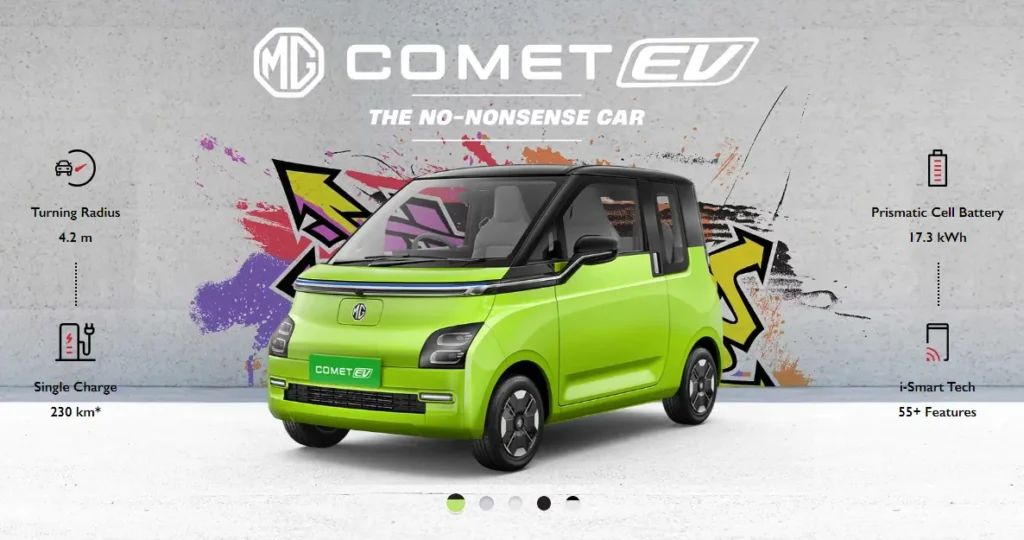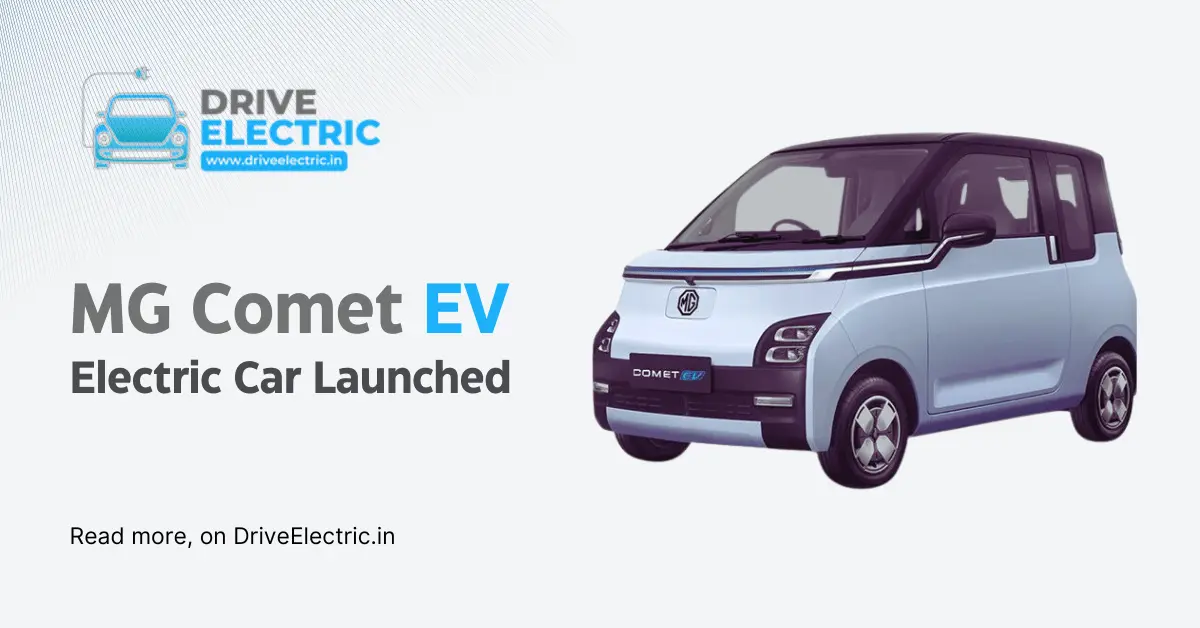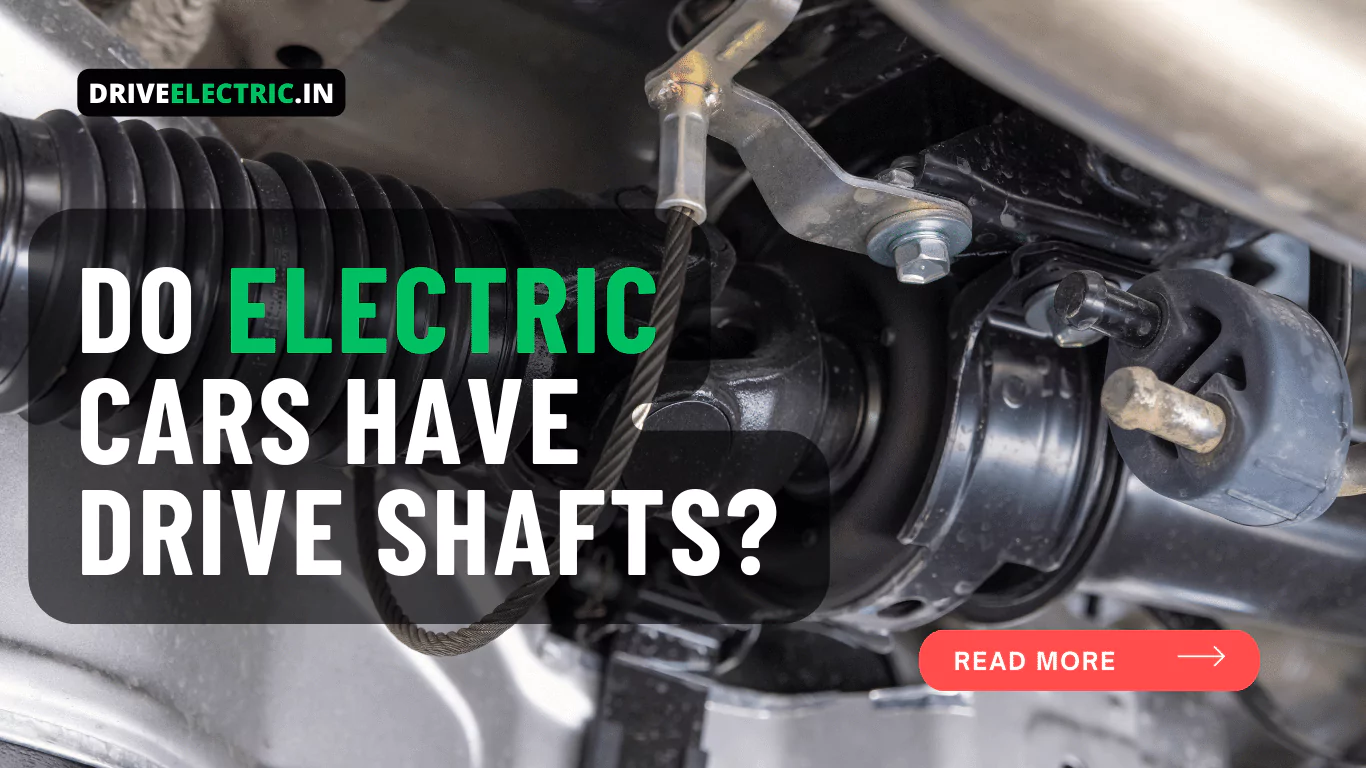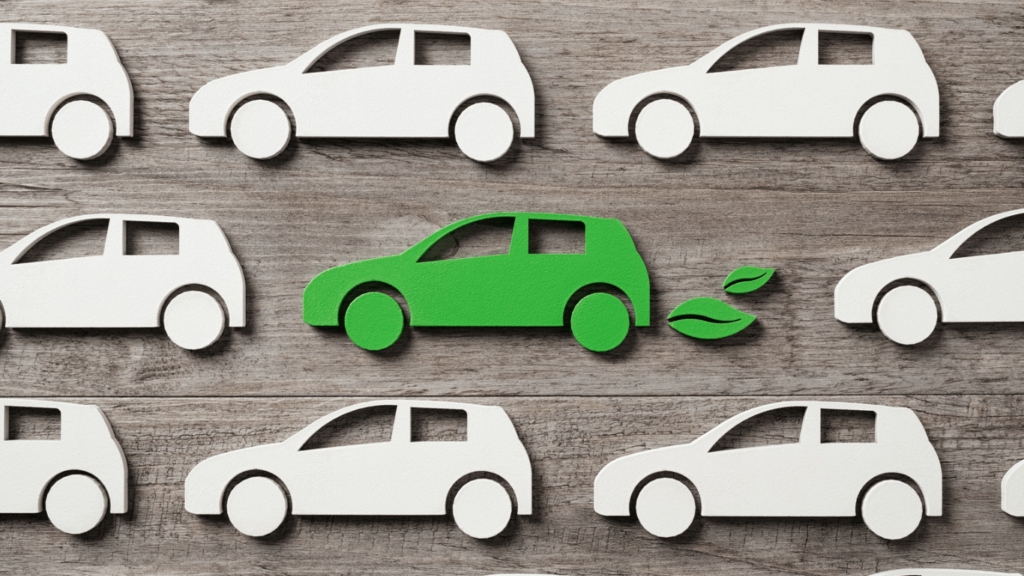MG Motor, a British automotive brand, has launched its latest electric car, the MG Comet EV, in India. This new electric vehicle is one of the most affordable electric cars in the Indian market, and it is expected to be a game-changer for the automotive industry in India.
MG Comet EV is designed keeping in mind the city requirements of modern India and making inter-city rides smooth. As per the company it is affordable, compact, hi-tech, and smart.
In this article, we will discuss the features and specifications of the MG Comet EV, its impact on the Indian market, its potential for success, and whether it is an ideal electric car for you.
Overview of the MG Comet EV

The MG Comet EV is a compact electric car that is designed to be eco-friendly, affordable, and practical. The car has a sleek and modern design, with a spacious interior that can accommodate up to four passengers comfortably. The car is powered by a 17.3 kWh Lithium-Ion battery pack that provides a range of up to 230 kilometers on a single charge.
It rides on smaller 12-inch wheels. It comes in Black, Silver, and White solid colors or with dual-tone green with black or white and black. The company also offers 4 styling packs and a range of sticker & graphics combos for personalization.
Thanks to its compact design it has a turning radius of 4.2M. It has smart features and can be controlled with 100+ voice commands via its mobile app. You can share the digital key with your partner allowing you to lock/unlock, On/Off its engine, control the lights, etc.
Features
Design and Exterior
The MG Comet EV has a futuristic and sleek design that is sure to turn heads. It boasts two doors and its 3 meters long and 1.5 meters wide. The car features a sloping roofline, a steep front, and LED headlights. The illuminated logo at the front & extended horizon light from the front to the back of the vehicle surely turns eyeballs. The car’s body is made of lightweight materials, which helps to improve its performance and efficiency.
Interior
The interior of the MG Comet EV is spacious and comfortable it has Space grey interiors, with ample legroom and headroom for all passengers. The car features a 10.25-inch touchscreen infotainment system, which is compatible with both Android Auto and Apple CarPlay. The car also has a digital instrument cluster and a multifunctional steering wheel.
Performance and Range
The MG Comet EV is powered by a 17.3 kWh battery pack, which provides a range of up to 230 kilometers on a single charge. Charging on 3.3kW AC from 0-100% takes 7 hours and 10-80% can be charged in 5 hours. The car has a top speed of 80-85 km/h. The car also features regenerative braking, which helps to extend its range by recharging the battery while the car is braking.
Safety and Security
The MG Comet EV is equipped with a range of safety and security features, including ABS, EBD, dual airbags, and a rearview camera. The car also has a range of sensors and cameras that provide 360-degree visibility, making it easier for the driver to navigate in tight spaces.
Impact on the Indian Market
The launch of the MG Comet EV is expected to have a significant impact on the Indian automotive market. India is one of the largest automobile markets in the world, with a rapidly growing demand for eco-friendly vehicles. The MG Comet EV is one of the most affordable electric cars in India, with a price tag of around Rs. 7.9 lakhs [ex-showroom India]. This makes it an attractive option for customers who are looking for an eco-friendly car that is also affordable.
The MG Comet EV is also expected to contribute to the Indian government’s goal of reducing the country’s carbon footprint. The Indian government has set a target of achieving 30% electric vehicle adoption by 2030, and the launch of the MG Comet EV is a step in the right direction.
Potential for Success
The MG Comet EV has a lot of potential for success in the Indian market. India’s urban infrastructure is jam-packed during peak hours and has smaller roads, so an EV of this kind is the perfect mobility tool one can have. The car’s affordable price tag, combined with its eco-friendly features and modern design, makes it a very attractive option for customers.
The car also has a range of advanced features and specifications that make it a competitive option in the electric car segment. The success of the MG Comet EV will also depend on the availability of charging infrastructure in India. While the Indian government has set a target of installing 2.5 million charging stations by 2030, there is still a long way
While the Indian government has set a target of installing 2.5 million charging stations by 2030, there is still a long way to go before the charging infrastructure is adequate for the growing number of electric cars on the road. However, MG Motor has already taken steps to address this issue by partnering with various companies to install charging stations across India.
Another factor that will contribute to the success of the MG Comet EV is the company’s after-sales service. MG Motor is known for its excellent customer service, and the company has already announced that it will offer a range of after-sales services, including home charging facilities, mobile charging units, and 24/7 roadside assistance.
Specifications
Technical
| Overall Length (mm) | 2974 |
| Width excluding mirrors (mm) | 1505 |
| Height (mm) | 1640 |
| Wheel Base (mm) | 2010 |
| Turning Circle Radius (m) | 4.2 |
Electric Motor
| Electric Motor Type | Permanent Magnet Synchronous Motor |
| Max. Power (PS) | 42 |
| Max. Torque (Nm) | 110 |
Battery
| Battery Capacity (kWh) | 17.3 |
| Charger Connection Type | Type 2 |
| Estimated 3.3kW Charge Time (0-100%)** | 7 hours |
| Estimated 3.3kW Charge Time (10-80%)** | 5 hours |
| Range in Single Charge (km)* | 230 |
| Transmission | Automatic |
Tyre
| Tyre & Wheel | 145/70R12 |
| Front | Disc |
| Rear | Drum |
Brakes
| Front | McPherson Strut |
| Rear | Multi-Link Coil Suspension |
Interesting Facts about MG Comet EV
- Its 17.3kWH battery is packaged in India by Tata Autocomp
- Its Kerb Weight is around 817 KG
- There is no start button, a long pressing of the accelerator turns ON the vehicle
- Its top speed is approx 80 KMPH
Conclusion
In conclusion, the MG Comet EV is a promising addition to the Indian electric car market. Its eco-friendly features, affordable price, and practical design make it an attractive option for customers looking to make the switch to electric vehicles.
With a range of up to 230 kilometers on a single charge, the car is perfect for daily commutes and short trips around the city. Additionally, its compact design and smart features, including the ability to control the car with 100+ voice commands via its mobile app, make it a convenient and easy-to-use vehicle.
Overall, the MG Comet EV is a step forward in the transition to a greener future, and we can expect to see more electric vehicles like it entering the market in the coming years.
FAQs
What is the price of the MG Comet EV in India?
The MG Comet EV is priced at around Rs. 7.9 lakhs [ex-showroom] in India.
What is the range of the MG Comet EV?
The MG Comet EV has a range of up to 230 kilometers on a single charge.
Does the MG Comet EV have fast-charging capability?
No. MG Comet EV charges 0-100% in 7 hours and 10-80% can be charged in 5 hours on 3.3kW AC power input.
What safety features does the MG Comet EV have?
The MG Comet EV is equipped with ABS, EBD, dual airbags, and a rearview camera, among other safety features.
What after-sales services will MG Motor offer for the MG Comet EV?
MG Motor will offer a range of after-sales services, including home charging facilities, mobile charging units, and 24/7 roadside assistance.




